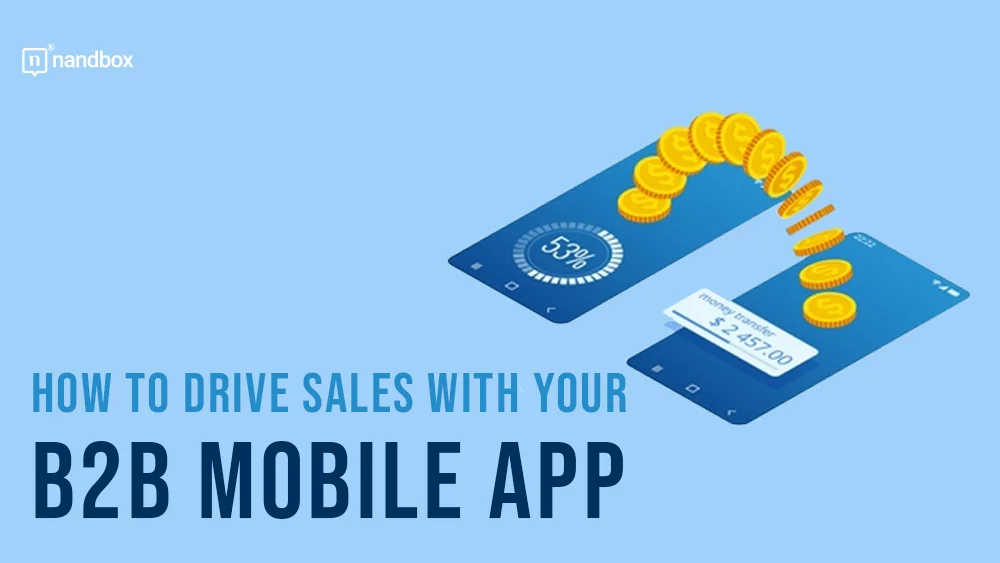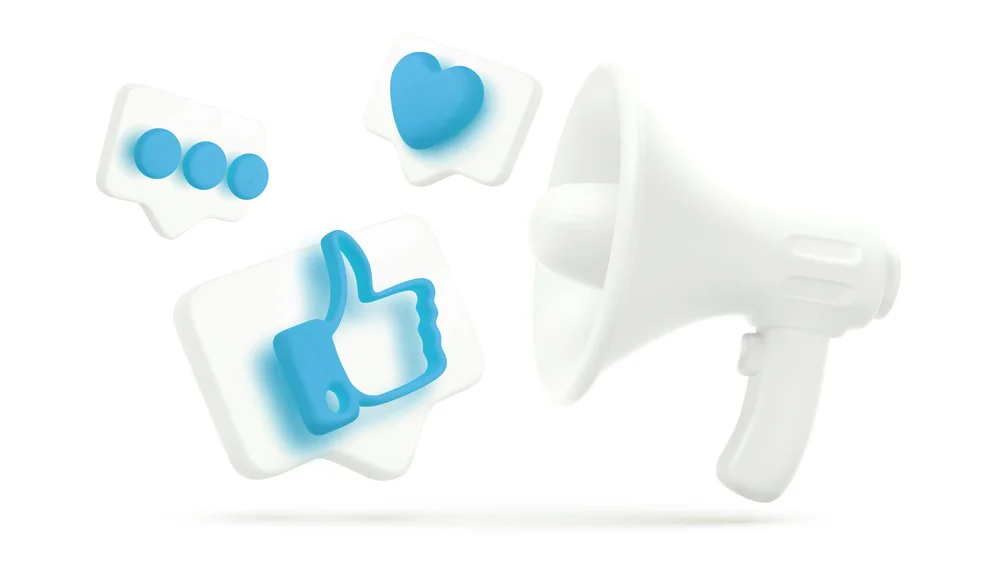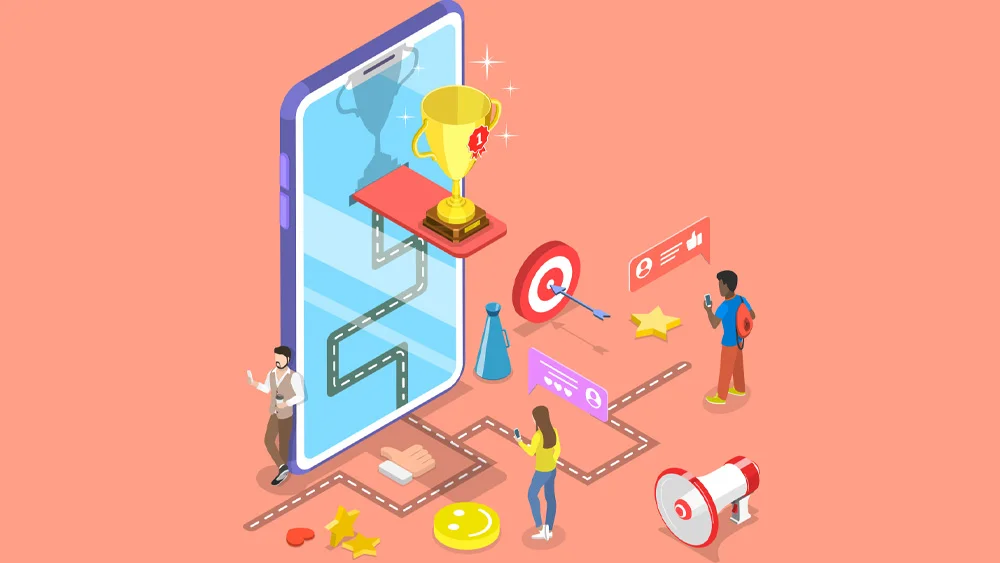Imagine navigating the B2B marketing landscape without a mobile app. It’s like setting sail without a compass. Additionally, you’re moving, but are you making progress? In our digital age, B2B buyers are increasingly turning to mobile devices for their research, comparison, and purchasing needs.
Backlinko reported that half of all B2B queries are made on smartphones, a figure that was projected to rise to 70% year over year all the way back in 2020. Even more striking, 80% of B2B buyers are making purchases via mobile devices. And it’s not just a tool for those on the move. B2B research is happening right in the office, right on smartphones.
This shift in behavior is a call to arms for B2B marketers. It’s time to harness the power of mobile apps to drive sales.
A well-optimized, intuitively designed B2B mobile app can be a game-changer. It’s your ticket to reaching your target audience anytime, anywhere and offering them a personalized, convenient way to engage with your brand. It’s your tool for streamlining the sales process, boosting customer loyalty, and increasing retention and referrals. Create B2B referral programs that offer existing customers an incentive to recommend your software to their friends and family. Members who are successful in recruiting new users should be rewarded with special privileges, such as discounts or special features.
In this post, we’ll delve into practical tips and best practices to drive sales with your B2B mobile app. Besides, Whether you’re a seasoned app veteran or just starting your journey, you’ll find valuable insights and examples to help you thrive in this competitive market.
Understanding the B2B Mobile App Landscape
Before you dive headfirst into creating or optimizing your B2B mobile app, it’s crucial to grasp the current trends and statistics related to B2B mobile app usage. This understanding will help you pinpoint the unique challenges and opportunities of B2B mobile app marketing and underscore the importance of a customer-centric approach in developing a B2B mobile app.
B2B mobile app usage is skyrocketing, with an increasing number of B2B buyers using their smartphones and tablets to research, compare, and purchase products and services. Statista reports that global mobile app downloads were expected to reach 255 billion in 2022, up from 218 billion in 2020.
Yet, only 8% of B2B marketers use mobile apps for content distribution. This gap signals a vast potential for growth and innovation. Even in-store shopping is influenced by mobile, with 80% of people reporting smartphone use during brick-and-mortar shopping.
These trends suggest that B2B buyers are becoming increasingly tech-savvy, using mobile for work, and multitasking across multiple screens. They’re no longer chained to a desk, so it’s high time for B2B marketing teams to think beyond the desktop. For example, companies that provide point-of-sale software for beauty salons can take advantage of this trend by offering a dedicated mobile app. This B2B app could allow salon owners and staff to manage business operations from their mobile devices, thus making their work more flexible and efficient. Such a move epitomizes the mobile-driven shift in B2B sales and marketing.
B2B Apps Present Unique Challenges and Opportunities
The growing adoption of B2B mobile apps brings unique challenges and opportunities for B2B marketers.
Challenges include:
- Delivering a seamless user experience across various devices and platforms
- Ensuring data security and privacy for sensitive transactions
- Adapting to diverse buyer personas and preferences
- Integrating with existing systems and processes
- Measuring and optimizing app performance and ROI
Opportunities include:
- Reaching new markets and customers
- Boosting brand awareness and loyalty
- Enhancing customer engagement and retention
- Streamlining the sales cycle and reducing costs
- Leveraging data insights and analytics for personalization and optimization
To navigate these challenges and capitalize on the opportunities of B2B mobile app marketing, a customer-centric approach to developing your B2B mobile app is paramount.
This means:
- Understanding your target audience’s needs, pain points, expectations, and behaviors
- Designing your app with user-friendliness, functionality, and value at the forefront
- Testing your app with real users and gathering feedback
- Monitoring your app’s performance and user satisfaction
- Continuously improving your app based on data insights and user feedback
By placing your customers at the heart of your B2B mobile app development, you can craft an app that delivers a superior user experience, solves their problems, and drives sales for your business
Defining Your B2B Mobile App Strategy
The first step in creating a successful B2B mobile app strategy is to establish clear goals and objectives. What do you want to achieve with your app? Are you aiming to increase brand awareness, enhance customer engagement, or streamline the sales process? Furthermore, By setting clear and measurable objectives, you can shape your strategy to meet these goals.
Understanding your target audience is equally important. Who are they? What challenges do they face? What are they looking for in a solution? By delving into their needs and pain points, you can design an app that not only meets their expectations but exceeds them.
Your B2B mobile app is not an isolated entity. It’s a part of your broader marketing ecosystem. Therefore, it’s crucial to incorporate insights from your integrated B2B marketing strategy to align your app’s messaging and branding. Your app should reflect your brand, offering a consistent experience across all touchpoints. By integrating your app into your overall marketing strategy, you can create a unified brand presence that drives sales and fosters loyalty.
Designing an Intuitive and User-Friendly B2B Mobile App
The user experience (UX) of your B2B mobile app can make or break its success. A seamless UX is not just about making your app easy to use; it’s about creating an environment that makes it easy for your customers to do business with you. A well-designed UX can simplify the buying process, making it easier for your customers to find what they need, understand your offerings, and ultimately make a purchase. In fact, a study by Forrester Research found that a well-designed UX could yield conversion rates up to 400%.
But how do you create a visually appealing and intuitive B2B mobile app interface? Here are a few tips:
- Keep it Simple: A cluttered app can be overwhelming. Keep your design clean and simple to make it easy for users to navigate.
- Use Familiar UI Patterns: Stick to UI patterns that users are familiar with. This can make your app feel intuitive and easy to use.
- Prioritize Important Features: Not all features are created equal. Prioritize the most important features and make them easily accessible.
- Use Clear and Concise Copy: Avoid jargon and keep your copy clear and concise. This can help users understand your offerings and make informed decisions.
- Test and Iterate: Always test your design with real users and iterate based on their feedback.
Personalization and customization options are also crucial for B2B users. B2B buyers often have specific needs and preferences, and a one-size-fits-all approach may not work.
By offering personalization and customization, you can tailor the user experience, making your app more relevant and valuable. This includes customizable dashboards and personalized product recommendations based on user preferences.
Leveraging Key Features to Drive Sales
The right features can turn your B2B mobile app from a simple tool into a powerful sales machine. Essential features that enhance the sales process within a B2B mobile app could include product catalogs, pricing calculators, or real-time inventory updates. You can also consider integrating warehouse management systems to elevate inventory management. These features can simplify the buying process, making it easier for your customers to find what they need and make a purchase.
Integrating customer relationship management (CRM) tools can also be beneficial. CRM integration can help you track customer interactions, manage leads, and automate sales tasks, making your app not just a sales tool but a comprehensive sales management system. Leveraging an online sales support assistant can prove effective in boosting sales and recording customer feedback data. It can also help to handle sales documents and conduct data entry within your CRM system.
Push notifications, in-app messaging, and real-time analytics are other valuable features for driving sales. Push notifications and in-app messaging can help you engage with your users, send personalized offers, and encourage them to take action. Real-time analytics can provide valuable insights into user behavior, helping you understand what works and what doesn’t, and optimize your app accordingly. At the same time, combined with the top sales enablement tools, your sales processes will be made easier than ever.
Integrating Your B2B Mobile App with Your Marketing Ecosystem
Your B2B mobile app should not exist as an island. It’s a vital component of your broader marketing ecosystem, designed to work in harmony with your existing marketing channels. This integration is not just about having a consistent brand image across all platforms, but about creating a seamless and unified customer experience.
Website
Consider your website, to illustrate. Your app could be integrated with your website in a way that allows users to switch between the two platforms effortlessly. For example, you could enable users to save products or information on your app and then view them on your website, or vice versa. This cross-platform integration can provide a seamless user experience and keep your brand at the forefront of the customer’s mind.
Email marketing is another powerful channel that can be integrated with your app. You could use email marketing to promote your app, sending targeted emails to your customers informing them about the benefits of using your app or updating them about new features or offers available on the app. Conversely, you could use your app to grow your email list by encouraging users to sign up for newsletters or updates.
Social Media
Social media is yet another channel that can be integrated with your app. You could use your social media platforms to promote your app, engage with your audience, and drive downloads. You could also enable social sharing features on your app, allowing users to share content or products on their social media platforms, thereby increasing your brand exposure.
Offline Channels
Even offline marketing efforts can be enhanced with your app. For example, you could use Uniqode’s free QR Codes in your physical store or at events, which, when scanned, could direct users to your app. This not only drives app downloads but also bridges the gap between your online and offline marketing efforts.
The key to successful integration is to ensure a seamless customer journey across all touchpoints. This means providing a consistent brand experience, whether the customer is interacting with your brand through your app, website, email, social media, or even in a physical store. By integrating your B2B mobile app with your marketing ecosystem, you can create a cohesive and powerful brand presence that drives sales and fosters loyalty.
Promoting and Driving Adoption of Your B2B Mobile App
Once you’ve built a well-designed app with the right features, the journey doesn’t end there. Furthermore, the next crucial step is to promote your app and drive its adoption within your target market. This process involves a multi-pronged approach, leveraging various strategies such as content marketing, social media promotion, and influencer partnerships.
Content Marketing
Content marketing is a powerful tool to educate your audience about the benefits of your app. This could involve creating blog posts, videos, infographics, or webinars that highlight the features and benefits of your app. You could also create case studies or testimonials showcasing how your app has helped other businesses. By providing valuable and informative content, you can position your app as a must-have tool for your target audience.
Social Media Promotion
Social media is another effective platform for promoting your app and engaging with your users. You can use your social media channels to announce new features, share tips and tutorials, or even run contests or giveaways. By creating engaging and shareable content, you can increase your app’s visibility, attract new users, and foster a community around your app.
Influencer Marketing
Influencer partnerships can also be a valuable strategy for promoting your app. By partnering with industry leaders or influencers, you can leverage their trust and authority to promote your app to a wider audience. This could involve having influencers review your app, share their experiences using your app, or even co-host a webinar or event.
Incentivizing Engagement
Incentivizing adoption and encouraging user engagement is another key aspect of promoting your app. This could involve offering exclusive discounts or rewards for app users, such as early access to new products, special discounts, or loyalty points. You could also create engaging in-app content, such as interactive tutorials, quizzes, or challenges, to keep users engaged and encourage them to use your app regularly.
Gamification
Running in-app contests or challenges is another effective way to incentivize adoption and engagement. For example, you could run a contest where users earn points for every action they take on the app, with the top earners winning a prize. This not only encourages users to engage with your app but also creates a sense of community and competition.
Promoting your app and driving its adoption is not a one-time effort but an ongoing process. By continuously engaging with your users, providing value, and incentivizing usage, you can drive the adoption of your app and turn it into a powerful tool for driving sales.
Tracking and Analyzing Performance Metrics
Overall, to ensure the success of your B2B mobile app, it’s crucial to track relevant metrics. This involves monitoring a variety of metrics that can provide insights into user engagement, sales, and app performance.
Here are some key metrics to consider:
- User Engagement Metrics: These metrics provide insights into how users are interacting with your app. This could include metrics such as daily active users, session length, and in-app actions.
- Sales Metrics: These metrics can help you understand how your app is contributing to your sales. This could involve tracking revenue generated through the app, conversion rates, or average order value.
- Performance Metrics: These metrics can help you assess the technical performance of your app. This could include metrics such as app load time, crash rate, or error rate.
By tracking these metrics, you can gain valuable insights into how users are interacting with your app, how your app is contributing to your sales, and how well your app is performing technically.
Key performance indicators (KPIs) and analytics tools can be invaluable in this process. They can help you monitor app performance, understand user behavior, and identify areas for improvement. For example, you might use an analytics tool to track user behavior within your app, or a CRM tool to track sales generated through the app.
Based on these data insights, you can optimize your B2B mobile app. This could involve making changes to improve user engagement, tweaking your sales process to increase conversion rates, or fixing technical issues to improve app performance. By continuously monitoring and optimizing your app, you can ensure it remains effective and efficient in driving sales.
Final Thoughts
the journey to driving sales with your B2B mobile app is a comprehensive one, requiring a deep understanding of your audience, a well-crafted strategy, an intuitive design, and the right features.
It’s about integrating your app into your broader marketing ecosystem, promoting it effectively, and continuously tracking and optimizing its performance. It’s a journey that puts your customers at the heart of your efforts, aiming to provide them with a seamless, personalized, and value-adding experience.
And while the journey may be complex, the destination—a powerful sales-driving tool—is well worth the effort. Remember, in the rapidly evolving digital landscape, a customer-centric approach and continuous improvement are your keys to success.
To sum it up, set sail on your B2B mobile app journey and watch as it transforms not just your sales but your entire business.






